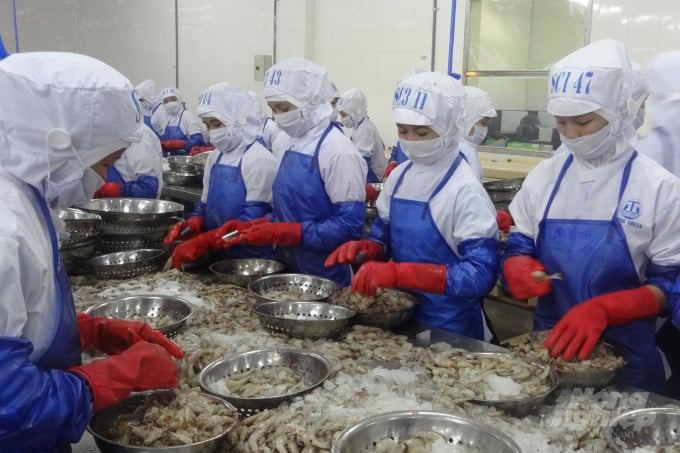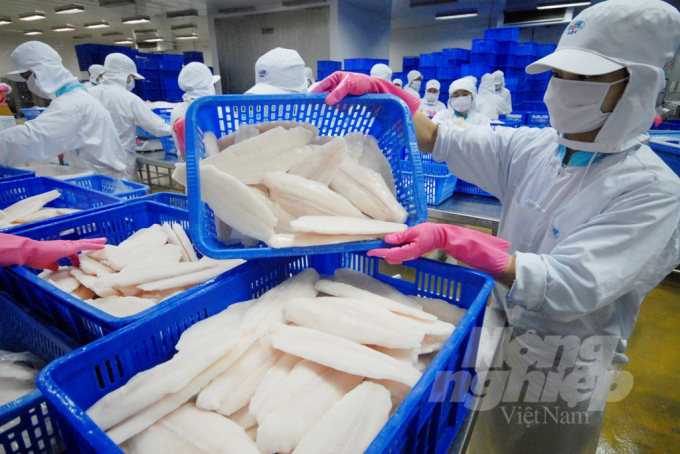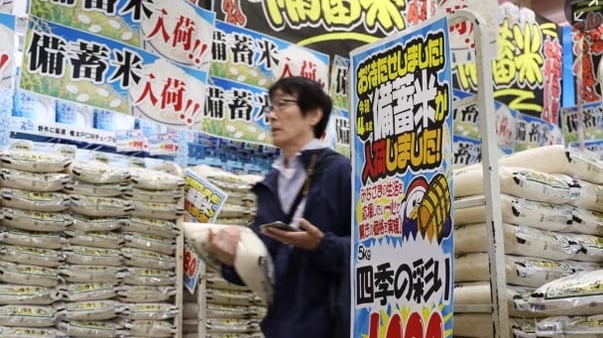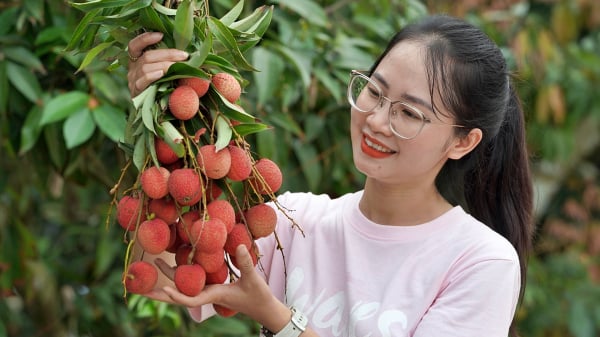June 18, 2025 | 15:07 GMT +7
June 18, 2025 | 15:07 GMT +7
Hotline: 0913.378.918
June 18, 2025 | 15:07 GMT +7
Hotline: 0913.378.918

Shrimp will still be Vietnam’s No. 1 export product. Photo: Thanh Son.
Vietnam’s seafood export turnover exceeded USD 8 billion for the first time in 2017. Having achieved such impressive figures, the seafood industry immediately set its sights on surpassing the USD 9 billion mark. However, in the following years, due to many reasons, seafood exports were still around USD 8 billion. The year 2021 was when the seafood industry comes closest to the USD 9 billion mark with a total of USD 8.9 billion.
Although the target of 9 billion USD has not yet been realized, the seafood export results achieved in 2021 are impressive in their own right, especially in the context of the whole industry being heavily impacted by Covid-19.
Not only that, the quick recovery of the seafood industry and strong growth in exports in the fourth quarter of 2021 created great momentum for exports in 2022. And the first month of this year has proven this true.
Information from the General Department of Customs shows that in the first month of 2022, seafood exports reached USD 872 million, up to 43.3% over the same period in 2021. This is the first time seafood export turnover exceeded USD 800 million. It can be said that the export results in January are signs of an even more favorable year for the whole seafood industry.
The largest markets of Vietnam's seafood also increased their imports over the same period: Seafood exports to the USA in January reached USD 200 million, up 82% compared to January 2021; Japan reached USD 134 million, up 19.25%; the EU reached USD 103 million, up 63.86%; South Korea reached USD 70 million, up 15.44%; China reached USD 62 million, up 62.15%.
Over the years, shrimp has always been the No. 1 commodity, the most important contributor to the success of Vietnam's seafood exports and currently accounts for 45% of the total export turnover, and 2022 will be no exception.
Mr. Truong Dinh Hoe, General Secretary of the Vietnam Association of Seafood Exporters and Producers (VASEP), said that despite being affected by Covid-19, shrimp farming in Vietnam still prospers thanks to the improvement in seed production, feed, farming technology, basically ensuring output for processing and export needs while world consumption and import demand for shrimp is expected to remain high in 2022.
Vietnam’s shrimp needs to determine to maintain and stand fỉm in main markets such as the USA, Japan, and the EU. Potential markets such as China, South Korea, the UK, Australia, Canada, Singapore also require further attention.
2021 is a very tough year for Vietnamese pangasius when the largest market, China, introduces trade barriers to reduce the amount of imported seafood, causing pangasius exports to encounter many problems during the first three quarters of the year.
Thanks to the rapid shift to other markets, also at the time the Chinese market recovered strongly in the last months of 2021, pangasius exports for the whole year 2021 still grew by 8.4% and reached USD 1.61 billion.

Pangasius exports to China are expected to be more stable. Photo: Le Hoang Vu.
It is within expectations that the source of raw pangasius this year will be the same as last year, at around 1.5 million tons. Excluding 300-400 thousand tons for domestic consumption, there are still over 1 million tons of raw fish to export.
Mr. Truong Dinh Hoe hoped that the largest market, China, will be more stable this year, thereby contributing to creating opportunities for pangasius to have better growth opportunities than in 2021.
One thing to note is that pangasius exports to China are no longer dependent on border trade as before, but mainly by sea. As a result, times when China closed land border gates no longer had much impact on pangasius exports to this market.
In 2021, although still affected by the IUU “yellow card”, seafood exports still reached USD 3.4 billion, up 6.7% compared to 2020 and ranked second after shrimp in terms of export seafood products.
Seafood exports still have many opportunities to rise even higher this year, especially when many importers are tending to shift seafood processing activities from China to Vietnam. In order to hold firm to and take advantage of this current trend in a timely manner, it is very important to facilitate the import of raw seafood.
Therefore VASEP has repeatedly proposed to the Government and the Ministry of Agriculture and Rural Development (MARD) in recent times to consider not implementing quarantine for frozen processed seafood products used as food with the products being imported for production and processing for export, not for domestic consumption.
Before the above proposal, on January 13, 2022, the MARD sent Official Letter No. 263/BNN-TY reporting the results regarding VASEP's recommendations. The Official Letter clearly states that in the second quarter of 2022 the MARD will issue a Circular amending and supplementing Circular No. 26/2016/TT-BNNPTNT in the direction of not implementing quarantine for frozen processed seafood products used as food with the products being imported for production and processing for export, not for domestic consumption.
With this move of the MARD, it is certain that importing raw seafood for export processing will be more favorable in the near future, thereby significantly contributing to the increase in seafood exports in 2022 and the years ahead.
Translated by Samuel Pham
/2025/06/17/2344-1-131758_261.jpg)
(VAN) Amid tariff risks and growing trade barriers in the U.S. market, Australia is emerging as a promising destination to sustain the growth momentum of Vietnam's shrimp exports.
/2025/06/17/2013-1-nongnghiep-112009.jpg)
(VAN) This notable growth trend reflects the global taste for fresh, nutritious fruits and the expanding use of lychees across various sectors.

(VAN) The political and cultural insulation of Japan’s beloved grain is falling apart, and experts warn the country’s relationship with the staple will have to adapt.

(VAN) Noting risks, report examines impacts of avian influenza, changing trade patterns since 2022, fish fraud, and shipping industry’s net-zero goals.

(VAN) Mr. Tran Quang Bao, General Director of the Forestry and Forest Protection Department, met and worked with the International Wood Products Association to promote cooperation in the field of timber trade.

(VAN) China's outbound shipments of rare earths in May jumped 23% on the month to their highest in a year, though Beijing's export curbs on some of the critical minerals halted some overseas sales.

(VAN) To sustain capital flow, administrative reform alone is not enough; what farmers truly need is an ecosystem where both government and businesses grow together in support.